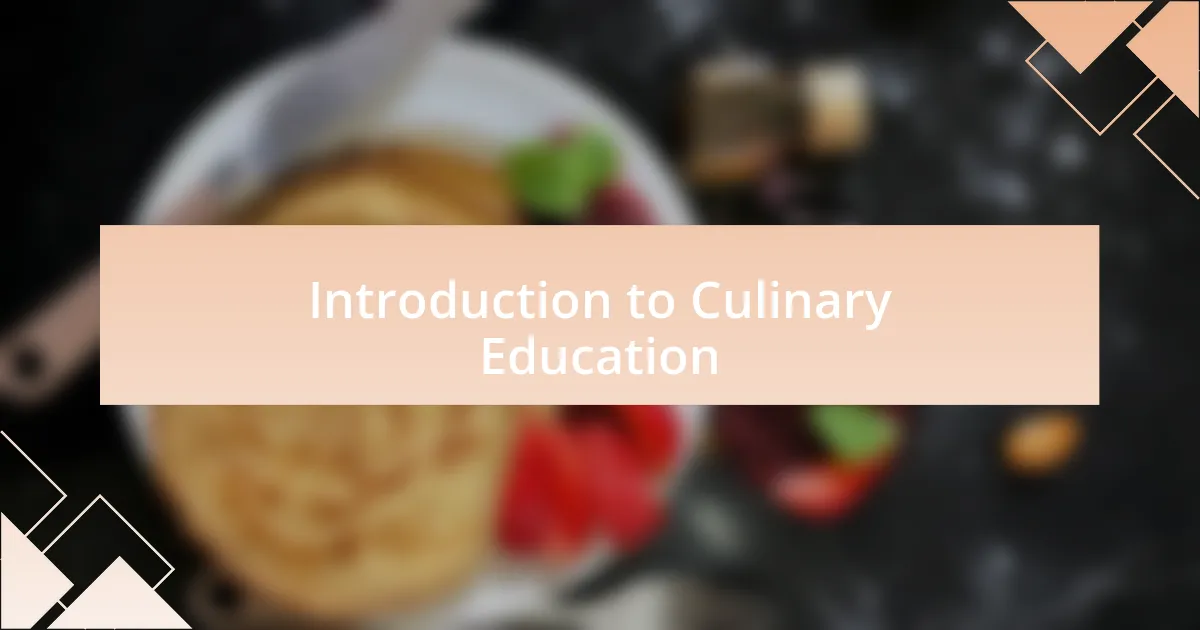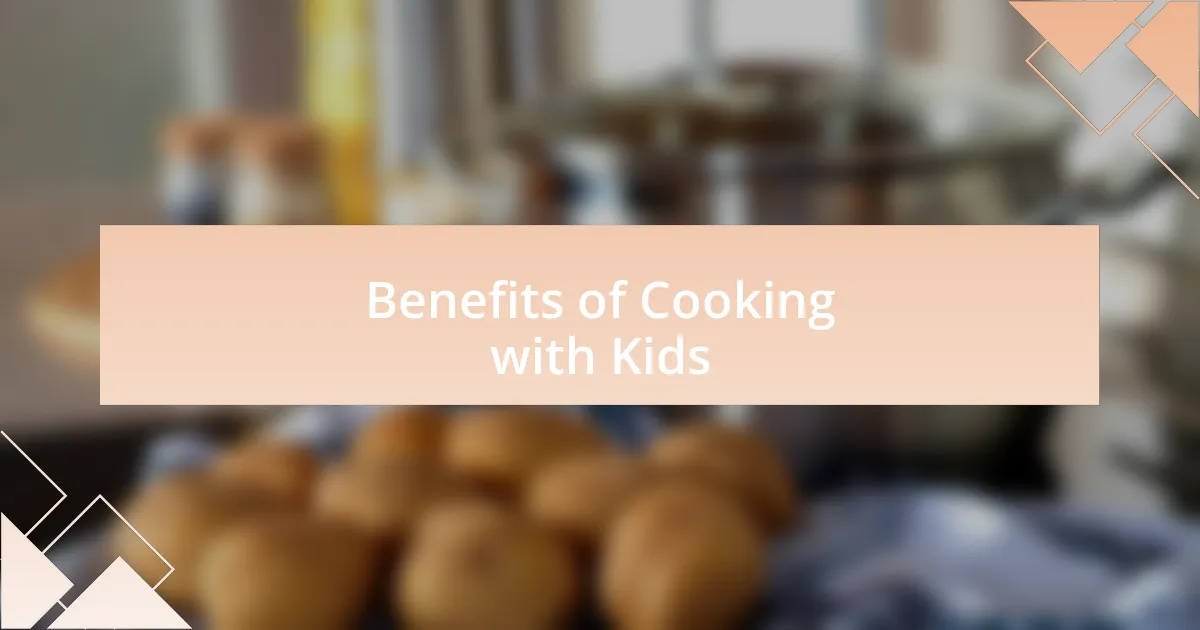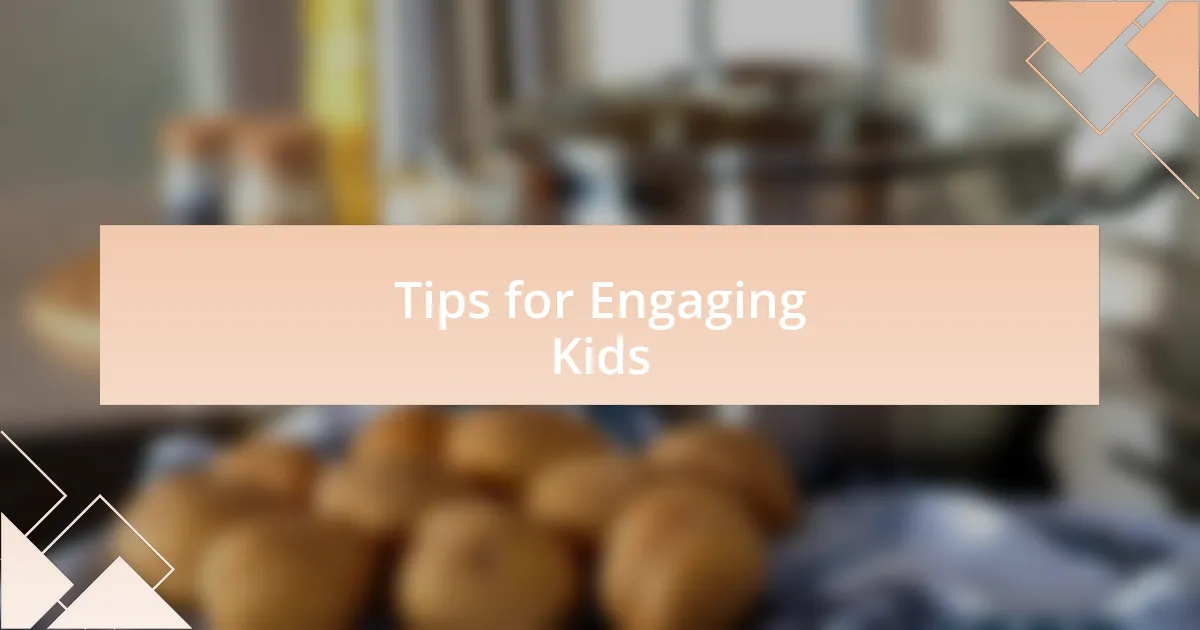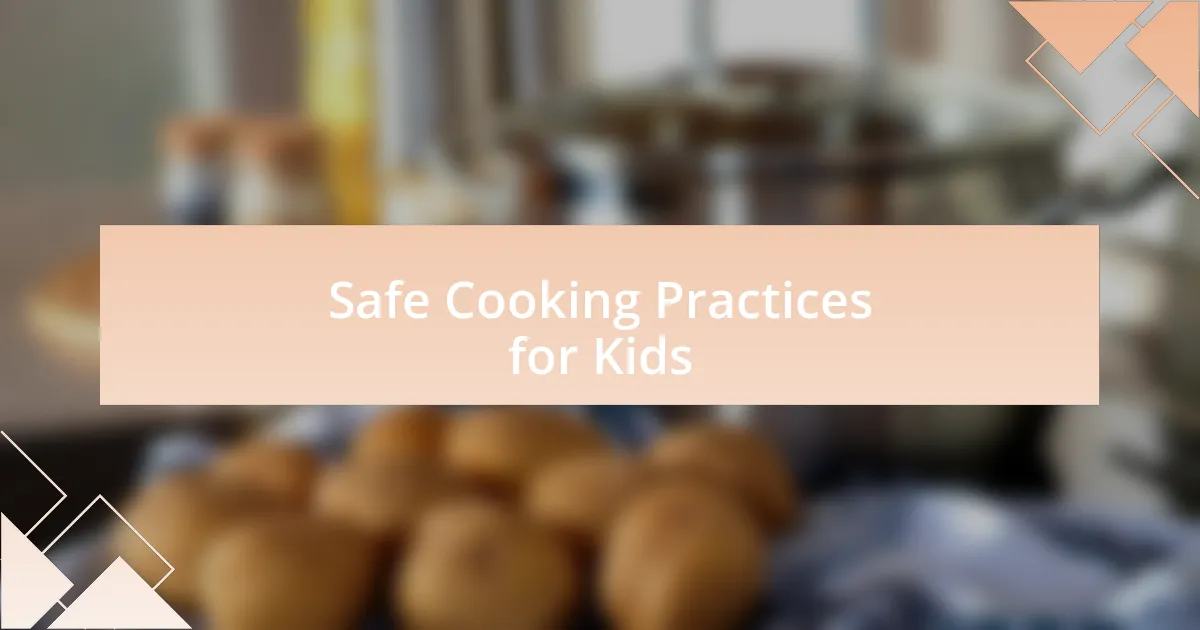Key takeaways:
- Culinary education fosters a lifelong connection to food and encourages creativity, independence, and expression through cooking.
- Teaching cooking skills to children builds confidence, critical thinking, and promotes healthy eating habits.
- Cooking with kids strengthens family bonds and teaches teamwork, while also enhancing their self-esteem through accomplishments in the kitchen.
- Engaging kids in cooking involves letting them take the lead, making it fun and sensory, and prioritizing safety and cleanliness.

Introduction to Culinary Education
Culinary education is more than just learning to measure ingredients; it’s about fostering a deep connection to food that can last a lifetime. I remember the first time I stood beside my grandmother in her cozy kitchen, feeling the warmth of freshly baked bread enveloping us. It’s in those moments that we not only learn techniques but also appreciate the love and creativity that go into every dish.
The world of culinary education opens up a treasure trove of skills, from knife techniques to flavor pairing, that can empower individuals to create their own culinary stories. Have you ever found yourself pondering how a simple ingredient can transform a meal? This is the beauty of cooking, and it offers endless opportunities for exploration and creativity. Each cooking lesson provides a chance to discover not just food but also the art of expression through ingredients.
Engaging with culinary education brings a sense of community, connecting people through shared tastes and traditions. I can still recall the excitement of cooking alongside other eager learners, exchanging tips and laughter as we crafted our dishes. Isn’t it thrilling to think about how these shared experiences can lead to lifelong friendships rooted in a mutual love of good food?

Importance of Cooking Skills
Cooking skills are essential for fostering independence and confidence in children. I recall the pride I felt when I successfully made my first omelet; it was a simple dish, yet the sense of accomplishment was profound. Teaching kids to cook instills a belief that they can create something delicious from scratch, which is a powerful lesson in self-sufficiency.
Moreover, cooking helps develop critical thinking and problem-solving skills. I remember a time when I had to improvise while preparing a meal with limited ingredients; it taught me to be resourceful and to think outside the box. Isn’t it fascinating how cooking can naturally encourage kids to experiment and learn from their mistakes, building resilience along the way?
In addition to practical skills, cooking promotes healthy eating habits that can last a lifetime. A few years back, I noticed a dramatic change in my diet when I started preparing meals at home instead of relying on takeout. Instilling the importance of cooking skills early can empower children to make healthier choices, allowing them to take charge of their well-being and embrace a nutritious lifestyle.

Benefits of Cooking with Kids
Cooking with kids goes beyond just putting a meal together; it fosters a special bond between parent and child. I vividly remember those afternoons spent in the kitchen with my younger sibling, where we’d laugh and occasionally bicker over what was going in the pot. Those moments created cherished memories, showing me that cooking is as much about connection as it is about food.
An unexpected benefit of cooking together is the boost to children’s self-esteem. I still see the look in my daughter’s eyes when she presented her very own homemade pizza to the family. It lit up the room in a way that only pride can. Watching kids realize they can create something delicious not only feeds their stomachs but also nourishes their confidence, turning them into budding chefs in their own right.
Another significant advantage is the opportunity to teach kids about teamwork and collaboration. When I cooked with my friends in high school for bake sales, we learned to communicate and delegate tasks like pros. Isn’t it rewarding to see kids work together to chop, sauté, or bake, while developing social skills that will benefit them in many aspects of life? Cooking is a practical classroom where they gain skills that extend well beyond the kitchen.

Tips for Engaging Kids
When it comes to engaging kids in the kitchen, one effective tip is to let them take the lead on certain tasks. I remember the thrill on my niece’s face when I handed her the whisk and encouraged her to beat the eggs for our pancake batter. By allowing them to take control of a simple task, we not only boost their confidence but also spark their interest in what they’re creating.
Involving kids in the decision-making process can drastically enhance their enthusiasm. I often ask my son what he wants to cook for dinner. When he suggested homemade tacos, I could see the excitement rise in him. The anticipation of choosing ingredients and assembling their own meal makes them more invested in the final product.
Making cooking a fun and sensory experience is another great way to keep kids engaged. I recall baking cookies with my daughter, and instead of just pouring ingredients in, we took time to touch the flour, smell the vanilla, and even taste the chocolate chips. This hands-on exploration creates a deeper connection to the food and transforms the process into an adventure rather than just a chore. What do you think? Engaging kids means creating memories that they’ll carry with them long after the last bite is taken.

Safe Cooking Practices for Kids
When cooking with kids, safety must be the top priority. I still remember the first time I let my young daughter chop vegetables; it was a thrilling moment for both of us, but I made sure to use a child-safe knife. Teaching her the proper way to hold it, along with the importance of keeping fingers tucked in, laid the groundwork for her confidence in the kitchen while minimizing risks.
Another critical aspect of safe cooking practices is emphasizing cleanliness. I’ve often turned handwashing into a fun song, making it a memorable part of our cooking routine. Have you ever noticed how kids love a good rhyme? This not only gets them to wash their hands before handling food but also instills the importance of hygiene in a way that sticks with them.
Lastly, setting up a safe cooking environment is essential. When we made pizza one weekend, I created a specific “kid zone” at the counter, ensuring that hot utensils and sharp objects were out of reach. By thinking ahead and organizing the workspace, I could focus on guiding my son as he poured sauce and sprinkled cheese, all without worrying about potential hazards sneaking into our fun.

My Favorite Kid-Friendly Recipes
Some of my favorite kid-friendly recipes revolve around simple ingredients that allow children to explore their creativity. One recipe that my daughter and I often whip up together is banana pancakes. Not only are they delicious, but I love watching her mash the bananas with enthusiasm, acting like a miniature sous chef. The gentle and forgiving nature of pancakes means that even if they don’t come out perfectly round, the smiles we share are what truly matter.
Another crowd-pleaser in our kitchen is homemade pizza. I find it exhilarating to see my kids take ownership of their meal, choosing their toppings and creating personalized masterpieces. The best part? When they inevitably argue over who gets to add the extra cheese, it turns into a fun negotiation process. This not only teaches them cooking skills but also teamwork—who knew making pizza could be a lesson in compromise?
Then there are our charming DIY fruit wands, which are as tasty as they are visually appealing. When I first introduced this idea, my kids were amazed by the colors and shapes we created. We thread pieces of strawberries, grapes, and melon onto skewers, transforming healthy snacks into edible art. With this recipe, I’ve seen my children develop a sense of pride in eating their fruits, all because they played a creative role in their presentation. Isn’t it wonderful how food can become a canvas for imagination?